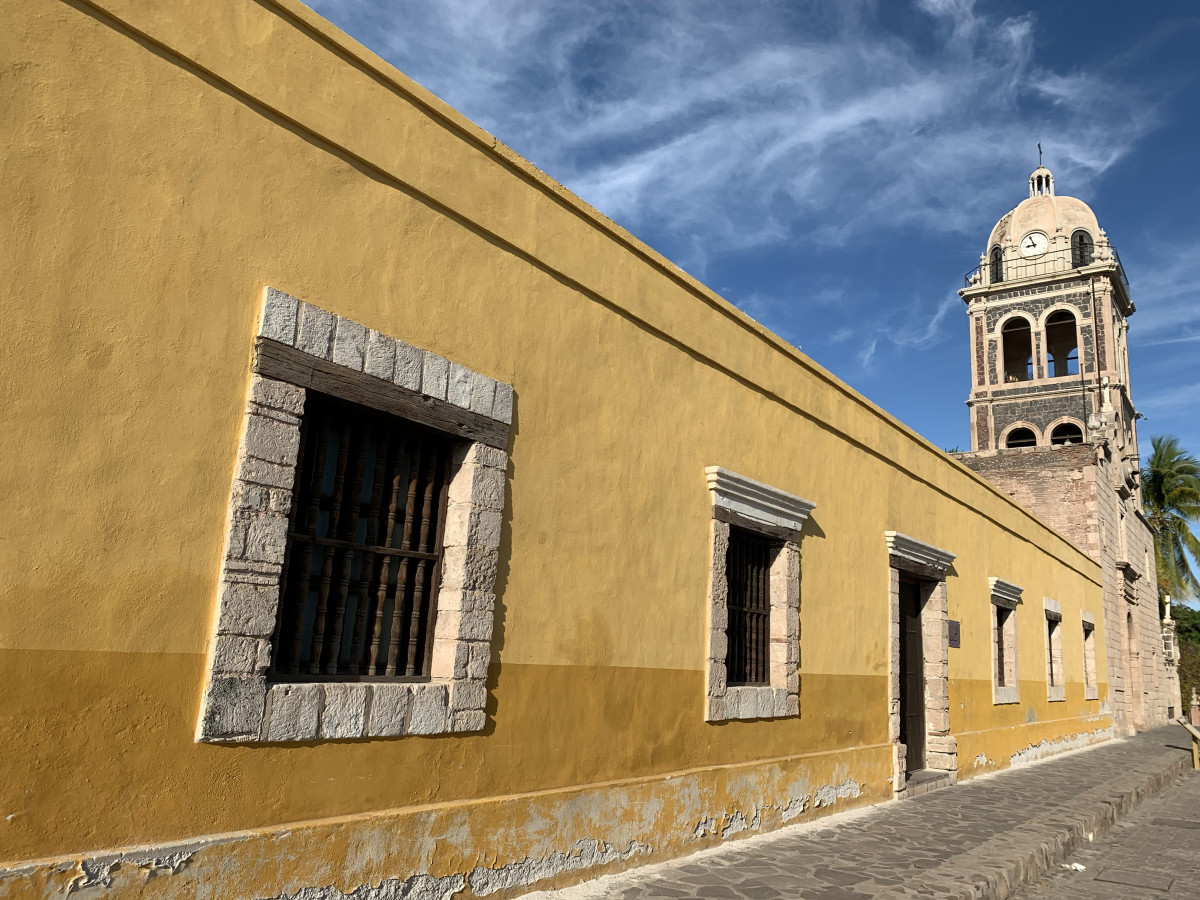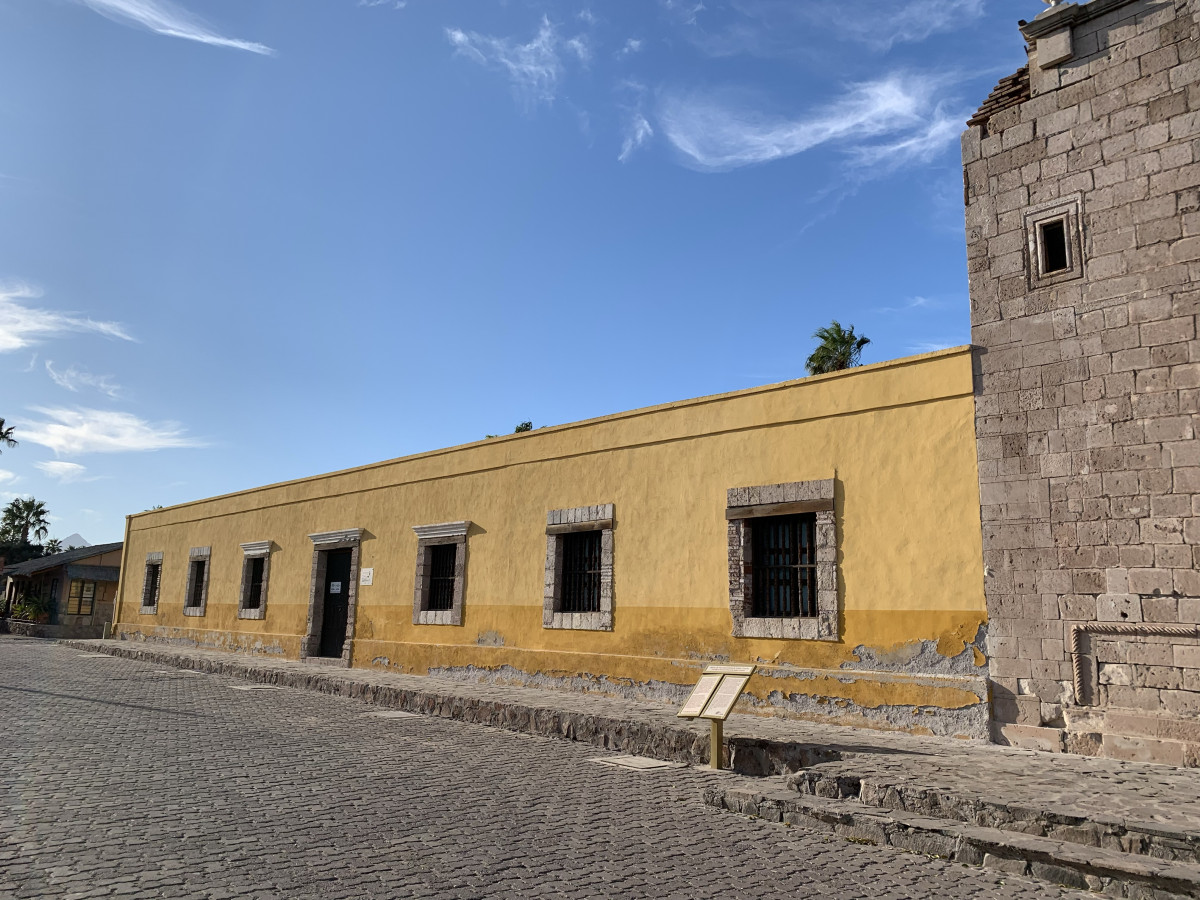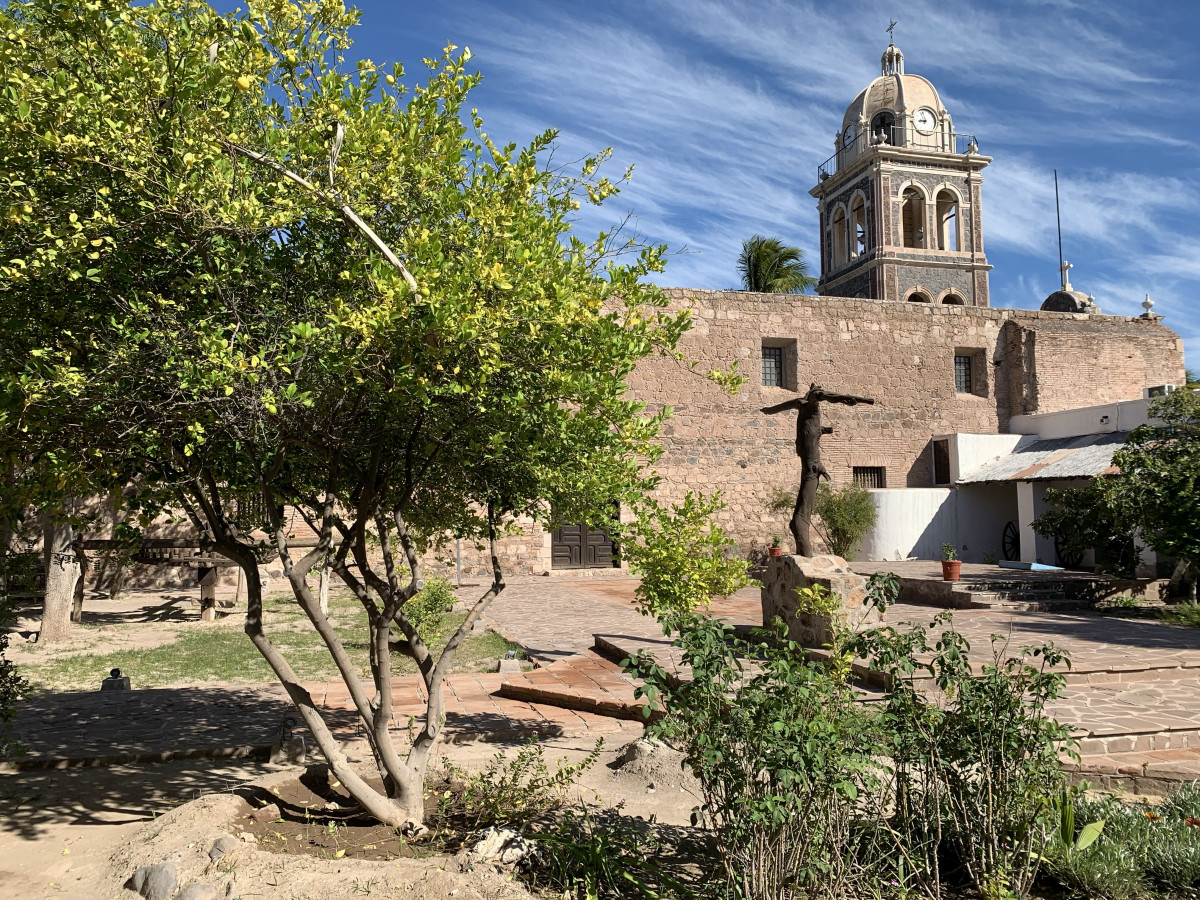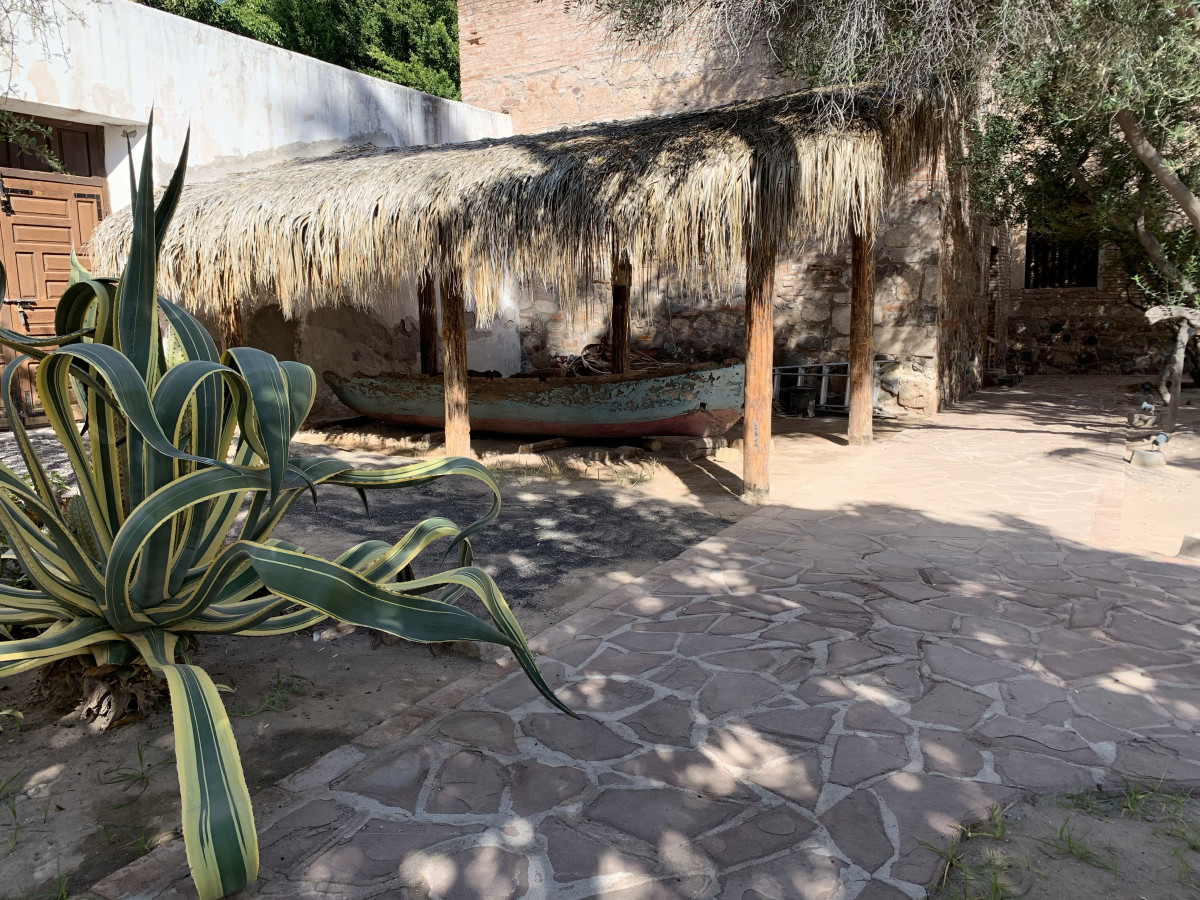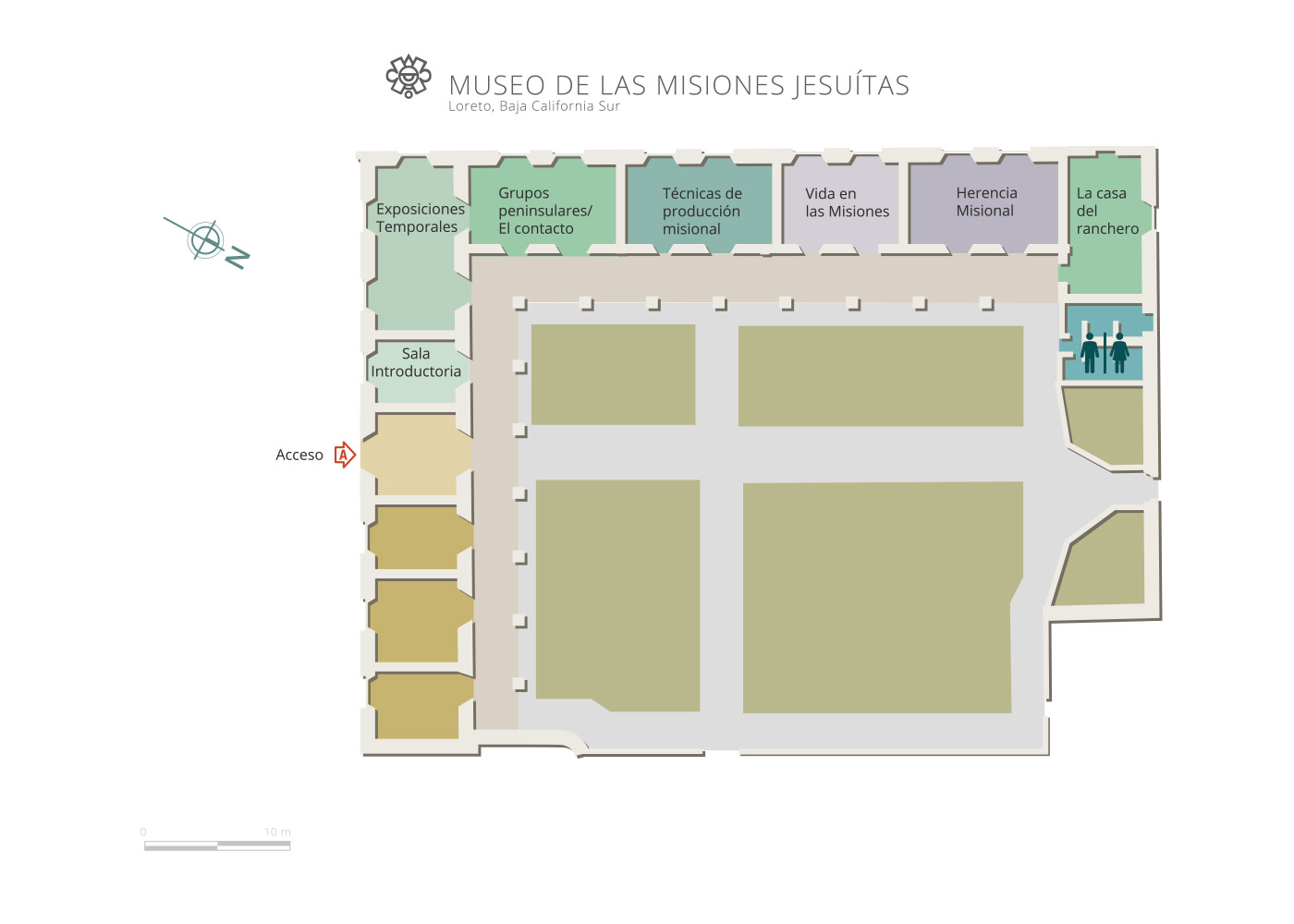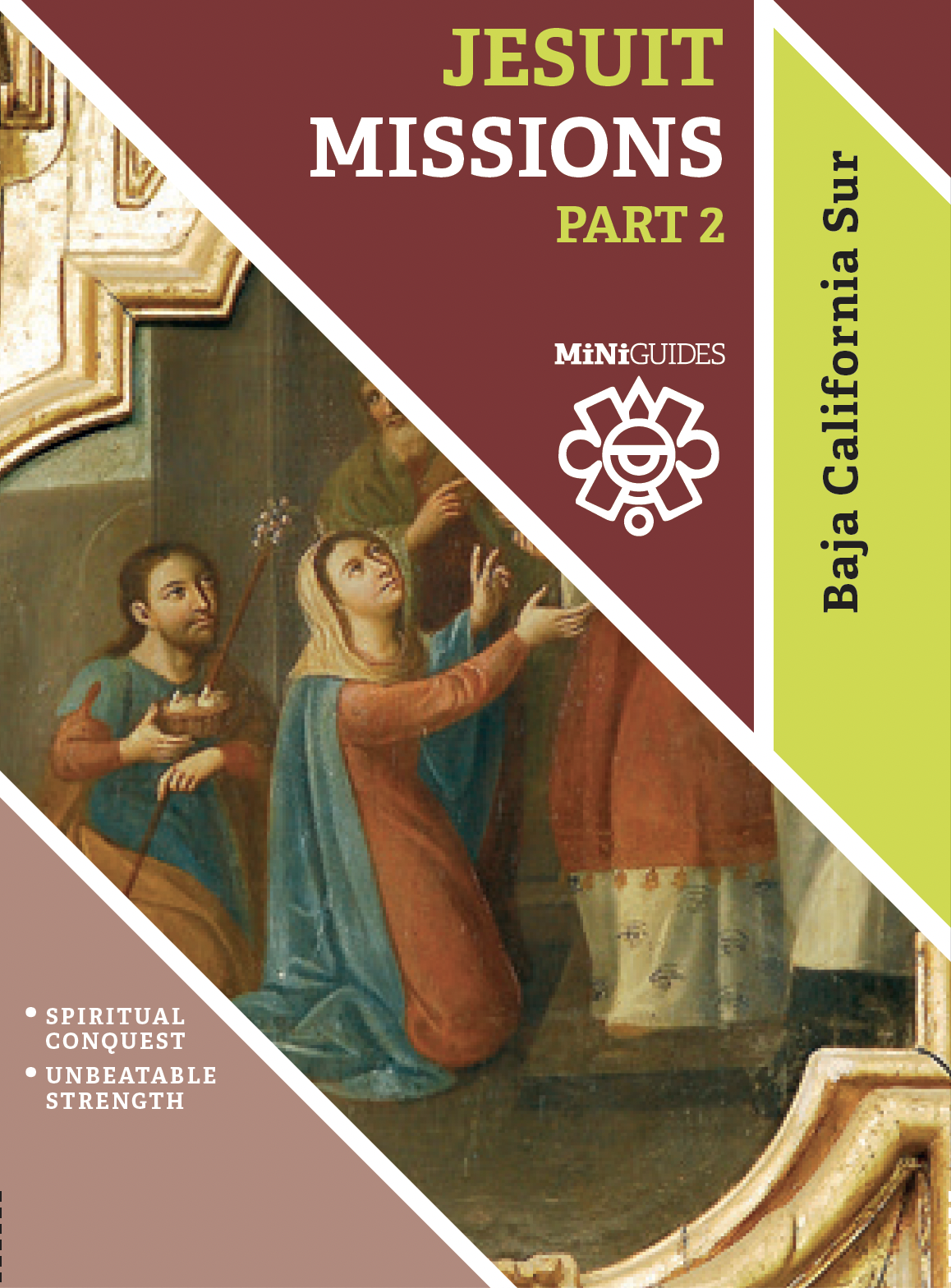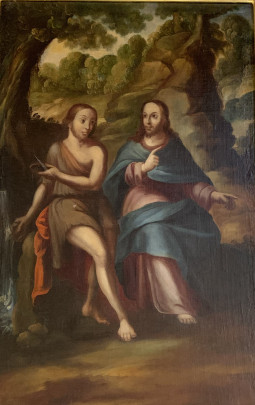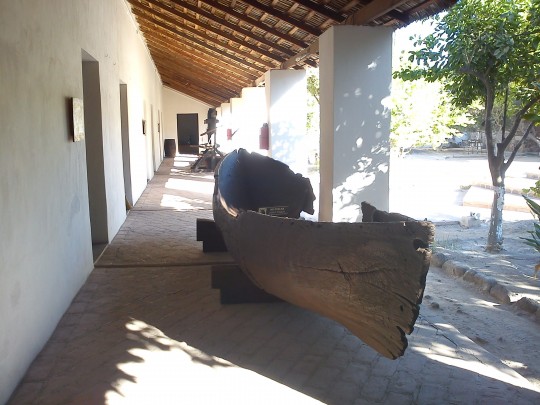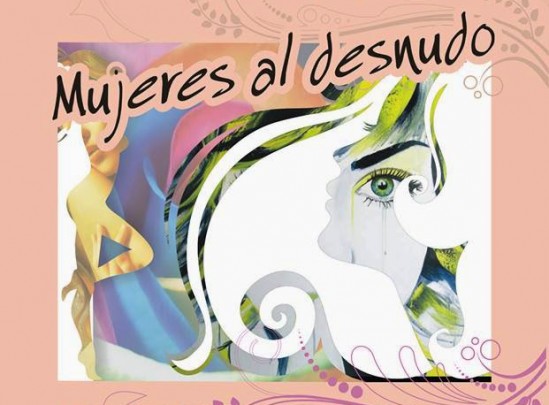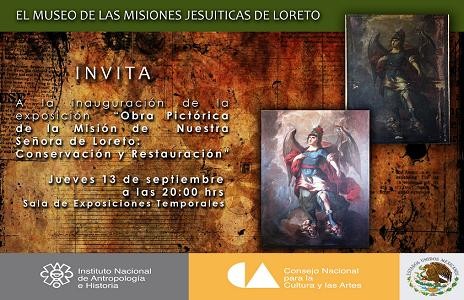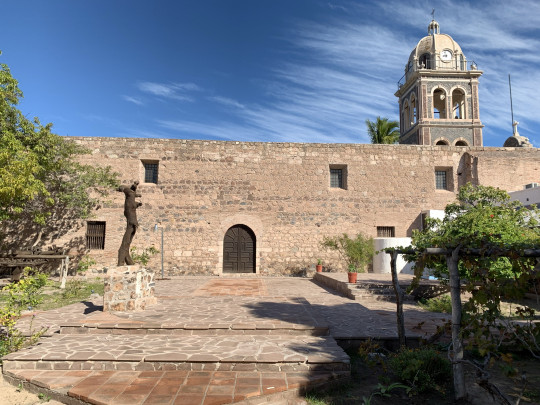The museum provides an overview of the 18 missions set up by the Company of Jesus in the peninsula of Baja California. It is located beside the Mission of Our Lady of Loreto, in its former storage building. It was built in the seventeenth century by the Jesuits, however, with the order for mass expulsion in 1767, it passed into the hands of the Franciscans and, afterwards, of the Dominicans. A collection of religious art, weapons and tools from the seventeenth and eighteenth centuries can be viewed within its six permanent exhibits. Through these objects, the visitor can gain an idea of how the missions establised by the Jesuits in Baja California developed. In addition, the museum provides information on the settlements which existed in the peninsula when the Spanish arrived, and it displays objects which these first settlers used for agricultural and cattle work, as well as in their daily lives.
Since its founding, the Loreto Missions Museum has been considered one of the most important cultural spaces not only in the state of Baja California Sur, but also in the peninsula of Baja California and even in the US state of California. This is because it is the original site of human occupation and development in the vast territory of the Californias. Indeed, it can even be considered a museum of sacred art, due to the type of collections which predominate. This would make it the only one in the north-east of Mexico, and the oldest in the region.
Thanks to its wonderful collections, the museum has become a major cultural and tourist attraction. The building in which it is housed is also of significant heritage value, as it is part of the first architectural complex to be built in the Californias, founded by the Italian Jesuit missionary Juan María de Salvatierra in 1697.
The layout of the museum retains that of the General Storage Building determined by the Inspector General José de Gálvez. The rooms which were originally intended for storing grains, quicksilver, cloths, tools and other items arriving from the coasts of Sinaloa now form the galleries for both permanent and temporary exhibits, as well as a center for historic documents currently under construction. The interior garden is reminiscent of the missionaries’ former gardens, and exhibits some of the crops introduced in the period, which are nowadays important icons of identity: grapevines, olives, fruit and citrus fruits, which quickly adapted to the Californian soil.
Cultural events also periodically take place here such as classical music concerts, conferences, book presentations, documentary screenings, workshops and plays.
It is an eighteenth-century landmark. José de Gálvez and the Marquis Viceroy of Croix were the first people responsible for implementing the Bourbon reforms in the region and in New Spain, which involved severe measures such as the expulsion of the Company of Jesus, as well as secularization of the missionary towns. As part of the process of replacing the missions with parishes, as well as promoting secularism among the civilian settlers, a strict order was given to build a General Storage Building, to collect and distribute supplies to the various towns in the peninsula.
After being abandoned for much of the nineteenth century, the building was converted into a lodging and rural school. In the 1970s, the presence of the National Institute of Anthropology and History (INAH) was strengthened in the state through the rescue and restoration of the Jesuit missionary churches. As a result, the creation of a site museum emerged which would broach the subject of the historical process of the missionary regime. In doing so, on 1st December 1973, the Museum of the Jesuit Missions of Loreto was born, in the former General Storage Building, adjacent to the church of the mission of Our Lady of Loreto. The museum’s collection brought together items of sacred art which had decorated Jesuit churches in the area and were restored by the Institute. The collection was complemented by a group of objects for everyday use from the missionary period, as well as instruments, artifacts and tools made in farms in the hills of La Giganta, Guadalupe and San Franciso. These illustrate the settlement process in the nineteenth century and the development of the Baja Californian identity rooted in the ranches, mining centers and missionary towns.
The museum’s collection is currently comprised of sacred works of art, particularly oil paintings, as well as sculptures made from carved wood, using estofado and polychrome techniques from the eighteenth century. It also contains ethnographic objects from the farms in the northern highlands of the state, as well as stone tools used by the original inhabitants of the peninsular who lived in the Loreto region.
-
+52 (613) 135 04 41
-
This email address is being protected from spambots. You need JavaScript enabled to view it.

